Comparing an RTX 30 card to an RX 5000 card seems pointless right off the bat, as we’re talking about two different generations from two companies. The RTX 30 series was unattainable for most for a while due to skyrocketing prices and scarce availability. Back then, the 5700 XT would be a smarter choice as it was: a) cheaper, b) available.
This has changed, and you’ll find a lot of information in this 3060 Ti vs 5700 XT comparison, including how much cheaper it is to buy a 3060 Ti in 2022 than a 5700 XT. Regardless of price, the 3060 Ti also outperforms the 5700 XT in almost every segment of this comparison, especially in performance.
3060Ti vs 5700XT – Quick Comparison
| RTX 3060 Ti | Specs | RX 5700 XT |
|---|---|---|
| GA104-200-A1 | GPU | Navi 10 XT (215-0917210) |
| PCIe 4.0 x16 | Interface | PCIe 4.0 x16 |
| 4,864 | GPU Cores | 2,560 |
| 152 | TMUs | 160 |
| 38 | RT Cores | N/A |
| 1,410 MHz | Base Clock | 1,605 MHz |
| 1,665 MHz | Boost Clock | 1,905 MHz |
| 8 GB GDDR6 | Memory | 8 GB GDDR6 |
| 1,750 MHz (14 Gbps effective) | Memory Speed | 1,750 MHz (14 Gbps effective) |
| 448.0 GB/s | Bandwidth | 448.0 GB/s |
| 256-bit | Memory BUS | 256-bit |
| 200 W | TDP (Founders Edition) | 225 W |
| 600 W | Required PSU (Founders Edition) | 550 W |
| 77°C (170.6°F) | Maximum Recorded Temp (Founders Edition) | 84°C (183.2°F) |
| 46dB | Max Fan Noise (Founders Edition) | 54dB |
| 1 x HDMI 2.0 3x DisplayPort 1.4a | Outputs | 1x HDMI 2.1 3x DisplayPort 1.4a |
RTX 3060 Ti
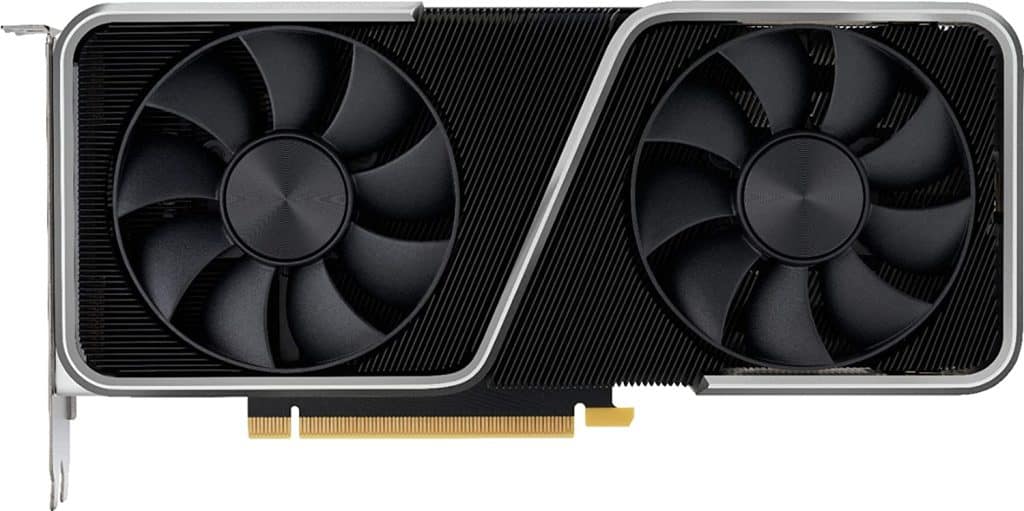
Released at the end of 2020, the RTX 3060 Ti is a ramped-up version of the base 3060 model. It offers better performance even though it seems constrained by a smaller VRAM. We can attribute the performance boost to a rise in core count, a larger memory BUS, and a higher base clock speed. Its outperforming of the base 3060 is even more profound when compared to AMD’s 5700 XT.
Nvidia has been at the top of the GPU market for years, especially in the high-end segment. It started out almost 30 years ago and has developed into the leading developer of numerous AI projects based on the computational power of its GPUs, as well as in many other fields of research.
Pros:
- More cores
- Ray Tracing Cores
- Lower TDP
- Great at 1080p and 1440p
Cons:
- Limited 4K performance
- Requires a more powerful PSU
RX 5700 XT
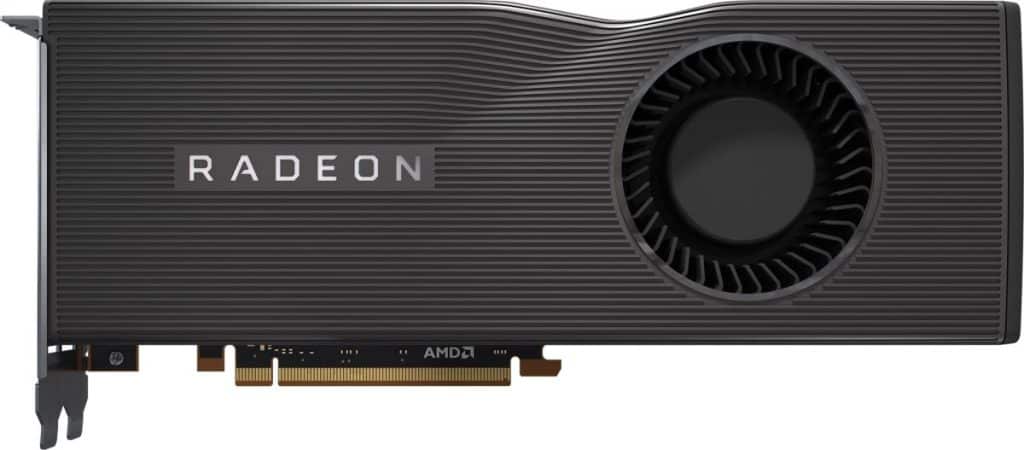
Released in July 2019, the Radeon RX 5700 XT had a lot going for it. It offered solid average Fps for the majority of AAA titles, supported DirectX 12, and was advertised as a 4K performer, though not by my standards. Users reported, and this goes for every AMD card, that it is prone to overheating, which would throttle its performance significantly.
AMD is a Silicon Valley-based company that started over 50 years ago. They have released some of the best CPUs to ever hit the market and a lot of good GPUs. It’s the high-end GPU segment that they have struggled with for years, which was the case at the time of the RX 5700 XT’s release. Nevertheless, this card was a good investment at the time, but can it compete with the 3060 Ti?
Pros:
- Higher clock speeds
- Solid at 1080p and 1440p
- Better peak texture detail
- Better NBody calculation
Cons:
- Fewer cores
- Higher TPD
3060 Ti vs 5700 XT: Key Specifications
Architecture
This is where the biggest differences are. The RTX 3060 Ti is based on Ampere, an architecture better suited for comparison with RDNA2 than RDNA (1), which is the basis of the RX 5700 XT.
RDNA
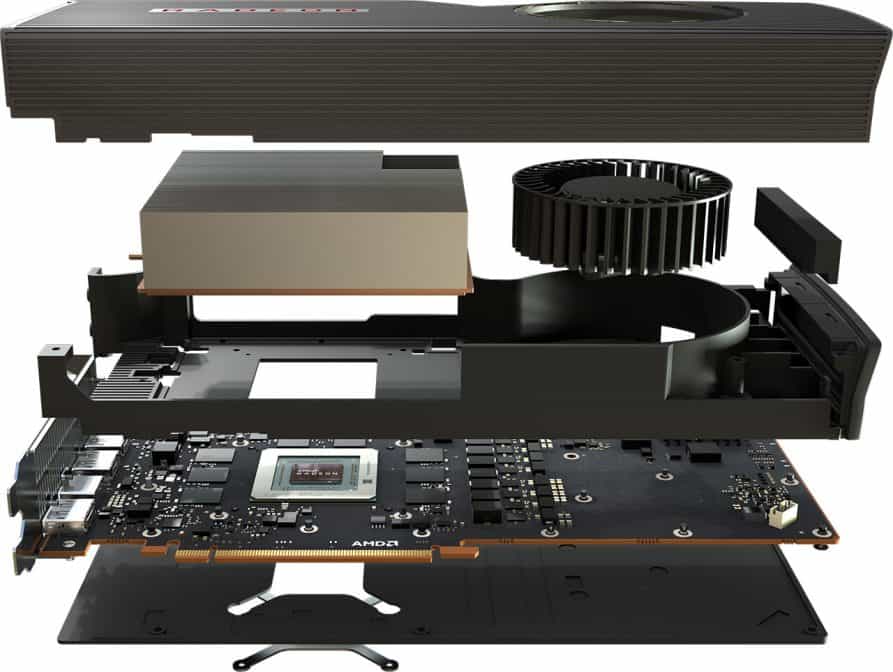
RDNA offered a significant boost compared to its predecessor, GCN. I could get all technical and talk about how RDNA issues instructions on every cycle, improving on the GCN’s once in four cycles, or how RDNA improved thread support, expanding to both 32 and 64-thread support instead of only 64 in GCN.
RDNA also introduced the workgroup processor (WGP), which replaced GCN’s compute units as the basic unit of shader computation hardware, effectively doubling the computational power of RDNA over GCN. All of this is pretty technical and sounds great, yet it’s far from Nvidia’s Ampere present in the RTX 30 series.
Ampere
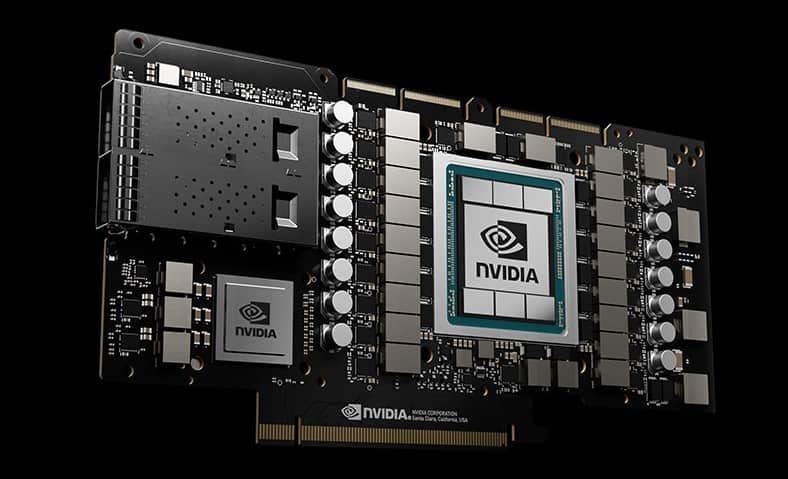
Ampere was Nvidia’s second jab at real-time ray tracing hardware, the third time around for their Tensor Cores, and was an unparalleled GPU series, according to many users. It was the fastest architecture in the world (welcome Ada Lovelace), a notion proved by its use in many research and development projects all over the world.
Related: Our RTX 4080 vs 3080 detailed comparison
It was designed for much more than gaming. Ampere’s consumer-grade GPUs (such as the 3060 Ti) are arguably the byproduct of Nvidia’s focus on catering to deep learning and AI development. Ampere is hard to compete with, even for RDNA 2, so the 5700 XT really didn’t stand a chance here.
Winner: RTX 3060 Ti
Clock Speeds & Overclocking
Clock speed is the frequency at which your GPU operates. Older GPUs usually didn’t fluctuate in clock speeds, while modern cards have both “base” and “boost” clock frequencies. “Base” clock is the default speed, while “boost” clock is activated automatically whenever your card is under intense load, giving it a boost in performance.
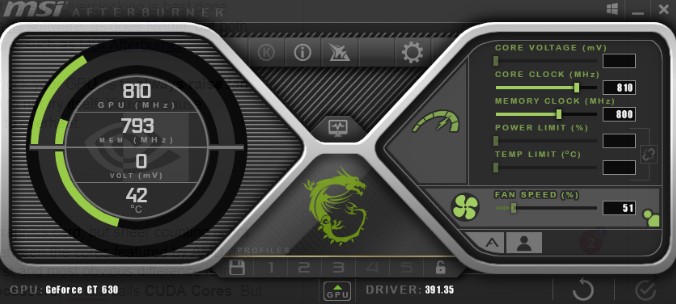
For those of you who aren’t satisfied with these frequencies, you can always resort to overclocking. Overclocking is manually tweaking the frequencies, voltage, fan speed, etc. of your GPU, VRAM, or CPU, for that matter, to achieve higher speeds and, thus, better performance. You can use Nvidia software (for Nvidia cards), AMD software (for AMD cards), or MSI Afterburner for both.
Newer Radeon cards tend to have higher clock speeds than Nvidia cards. That’s the case here as well, even though the 5700 XT is a generation behind the 3060 Ti. The 5700 XT has a base clock speed of 1,605 MHz and a boost clock of 1,905 MHz. The 3060 Ti has a lower base clock speed of 1,410 MHz and a boost clock speed of only 1,665 MHz.
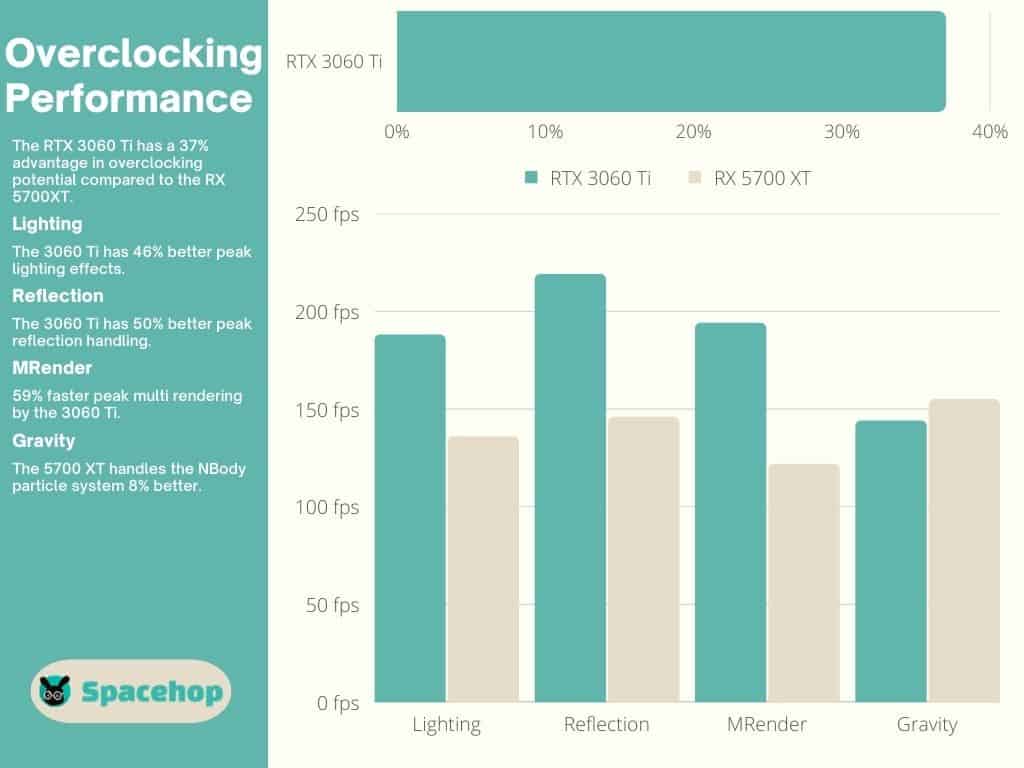
Even though the 5700 XT has higher clock speeds, it doesn’t show it in performance compared to the 3060 Ti (more on that later). Between the 3060 Ti and the 5700 XT, the former is also the better overclocker according to user benchmark test results, with a 40% better overclocking score, according to users.
Winner: RTX 3060 Ti
Also Read: How to Undervolt your CPU and GPU
VRAM & Memory Specs
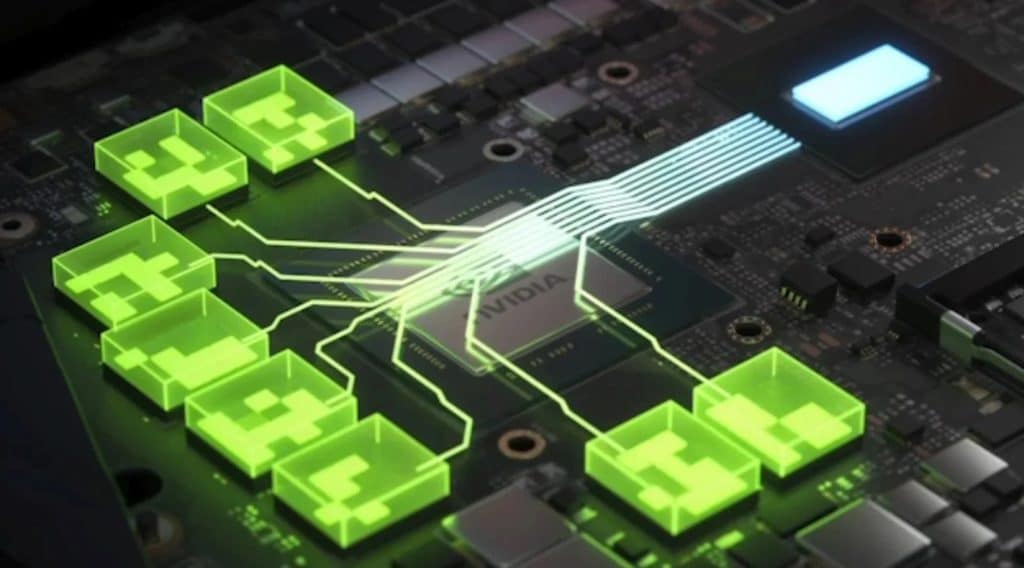
Another component of a GPU that you can overclock is its VRAM. Both the 3060 Ti and the 5700 XT have the same VRAM configuration, with 8 GB of GDDR6 VRAM paired with a 256-bit memory BUS and a speed of 1,750 MHz, or 14 Gbps effective speed. These speeds can be pushed further; just be sure to do it carefully.
Winner: Draw
Also Read: What’s the difference between VRAM and RAM?
Cores
Graphic Processing Units are parallel processors, much like your CPU is. The difference is that GPUs have thousands of cores. Thousands are necessary to handle and enable larger resolutions, more details, better-simulated physics, content from Unreal Engine, ray tracing, and much more. And that’s only on the gaming side of things.
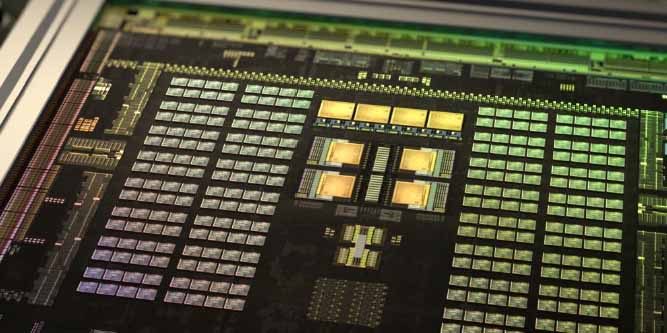
A whole segment of GPUs exists for data processing, AI development, cloud infrastructure, robotics, predictive medicine, etc., but neither of these cards fits into that segment. They do have some of the same components and basic architectures. The 3060 Ti has a lot more cores at 4,864 vs. 2,560 in the 5700 XT. That’s not only more, the 3060 Ti cores are also a generation ahead of the 5700 XT’s.
Winner: RTX 3060 Ti
Shaders, RT cores, and TMUs
Simply counting cores isn’t enough. We have to consider how they’re used. That’s where shaders come in. Shaders are generic programs designed to utilize GPU cores to create light and shadows, characters, and almost anything else required to render 3D worlds. The RTX 3060 Ti has a better Shader Model (6.6 vs. 6.5) than the 5700 XT, plus more cores for the shaders to use.
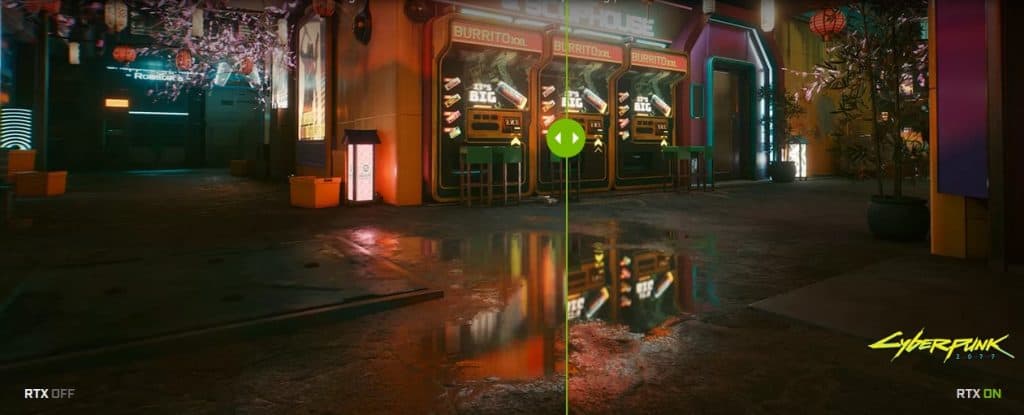
So, not only does the 3060 Ti have more cores working with a better Shader Model, but it also has a few other things going for it. One is its dedicated Ray Tracing Cores, and the other is its Tensor Cores. Ray tracing is the virtual world’s simulation of how light particles behave. It was previously used in CGI movies but is now available in select games due to GPU advancements and DirectX Raytracing support.
Nvidia was the first to offer us the hardware we needed with the RTX 20 series. They’ve now moved on to second-generation Ray Tracing Cores in RTX 30. DirectX Raytracing was released 20 days after the first RTX 20 card, offering support even for older Nvidia GPUs and the RX 6000 series, but not the RX 5000 series. The 5700 XT has its own software-based ray tracing, but it’s not comparable to the 3060 Ti.
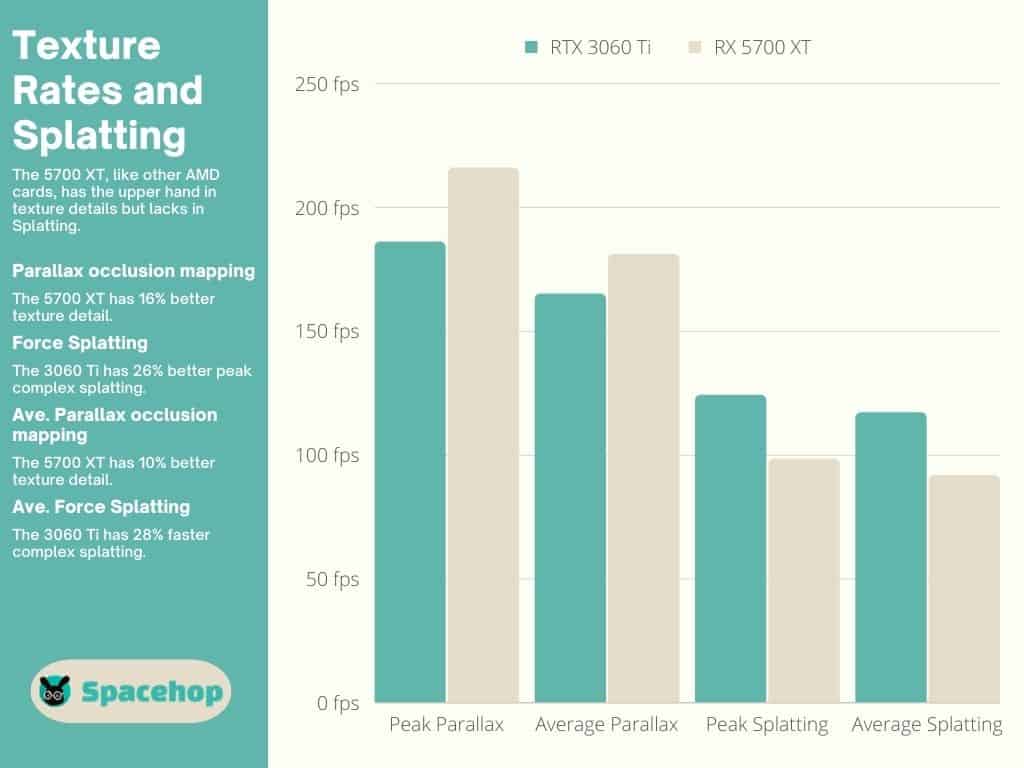
While ray tracing is a “nice to have,” it’s not essential. TMUs are. They are low-level, independent GPU components responsible for manipulating bitmaps to produce textures, a critical part of video game rendering. Without them, your in-game world would become distorted or grained. Interestingly enough, the 5700 XT has more TMUs and slightly better peak texture detail.
Winner: RTX 3060 Ti
Performance
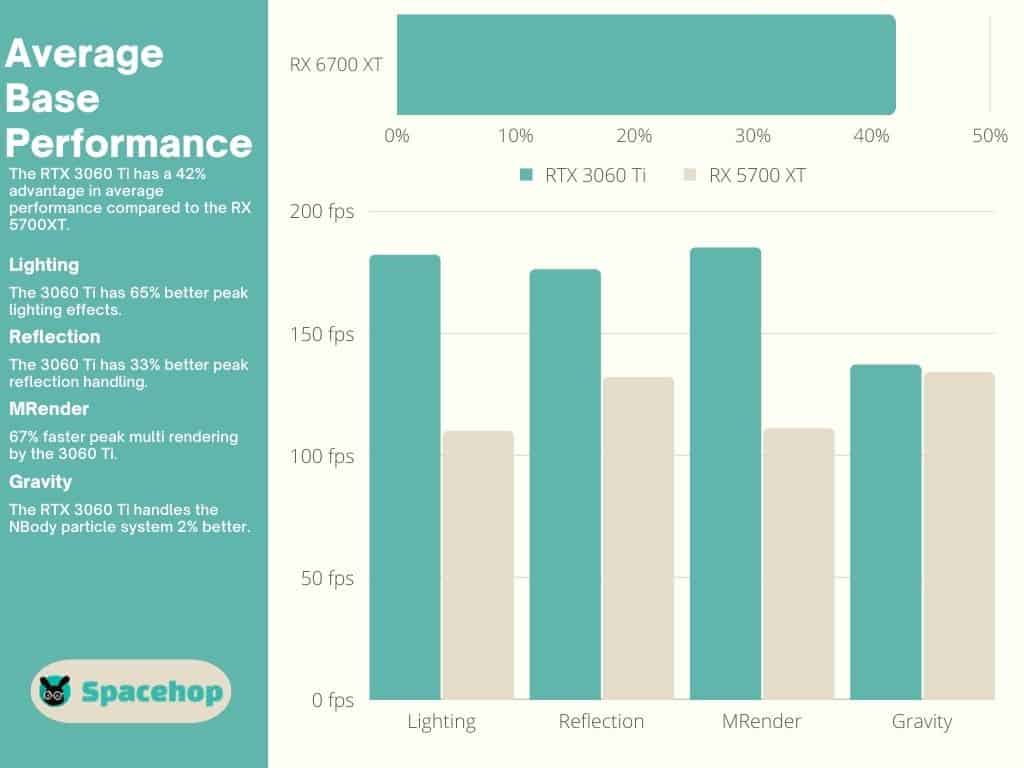
The 3060 Ti is 25% faster than the 5700 XT on average across 1080p, 1440p, and 4K. The only areas where the 5700 XT dominates are texture details and NBody (Gravity). I ran an 18-game test across all three resolutions.
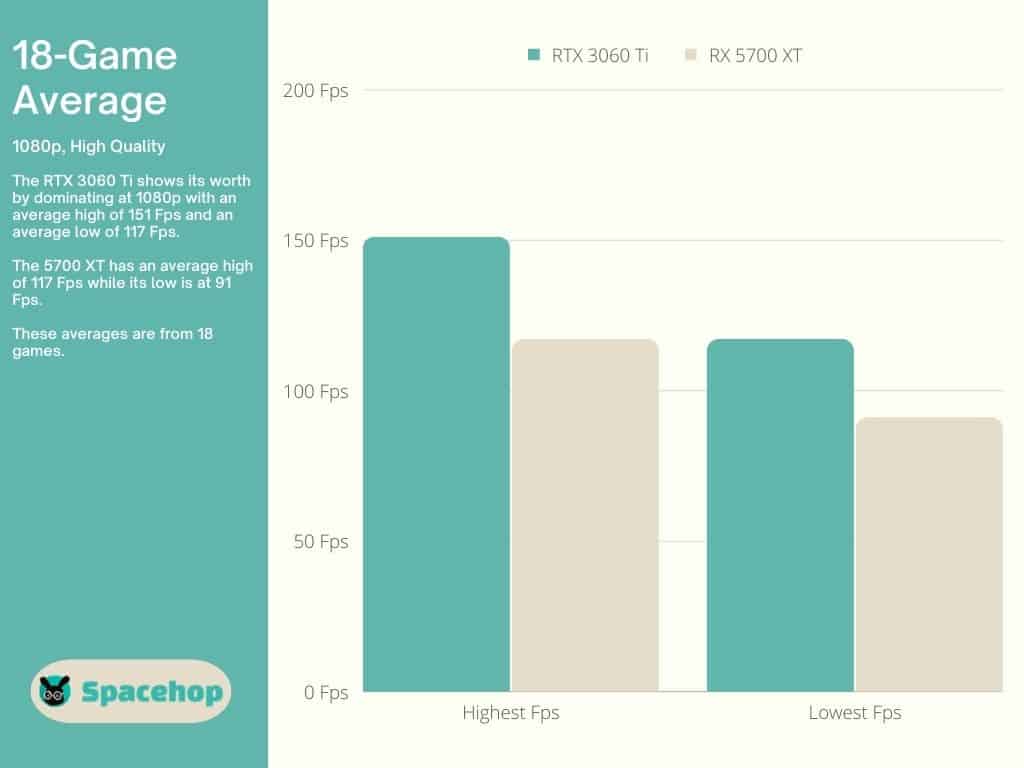
At 1080p, the 3060 Ti reaches up to 151 Fps on average, dropping no lower than 117, the same number that’s the highest Fps count for the 5700 XT (low: 91). At 1440p, the 3060 Ti reaches up to 114 Fps on average, dropping no lower than 92 Fps The 5700 XT reaches up to 94 Fps on average and drops to 76 Fps.
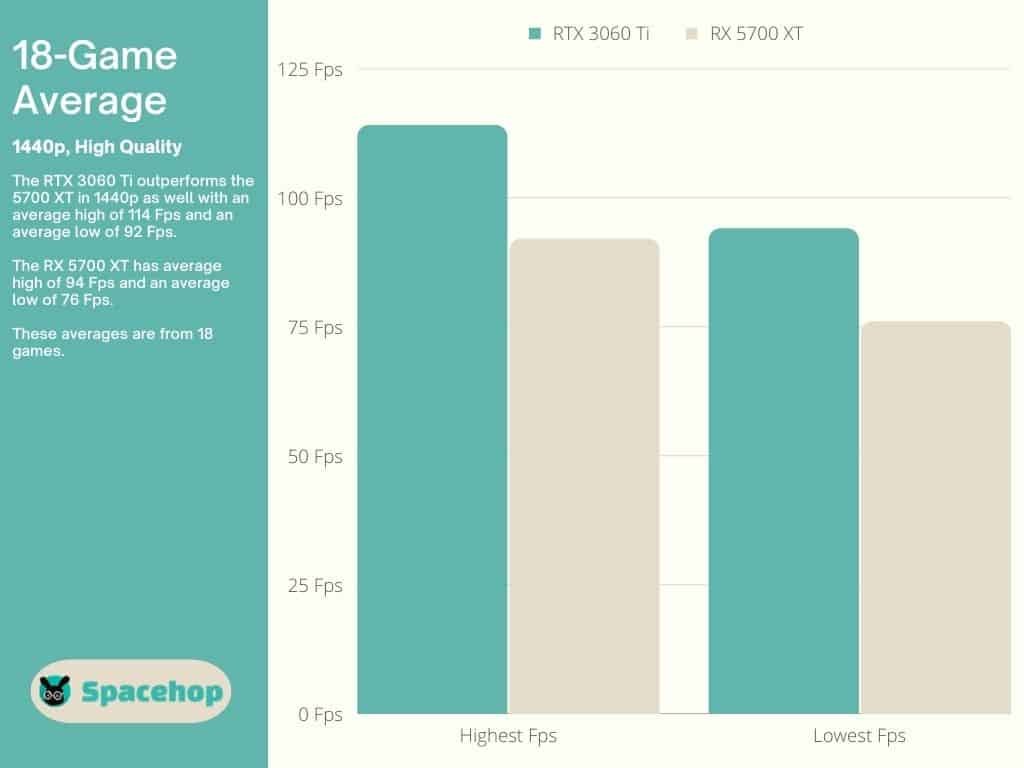
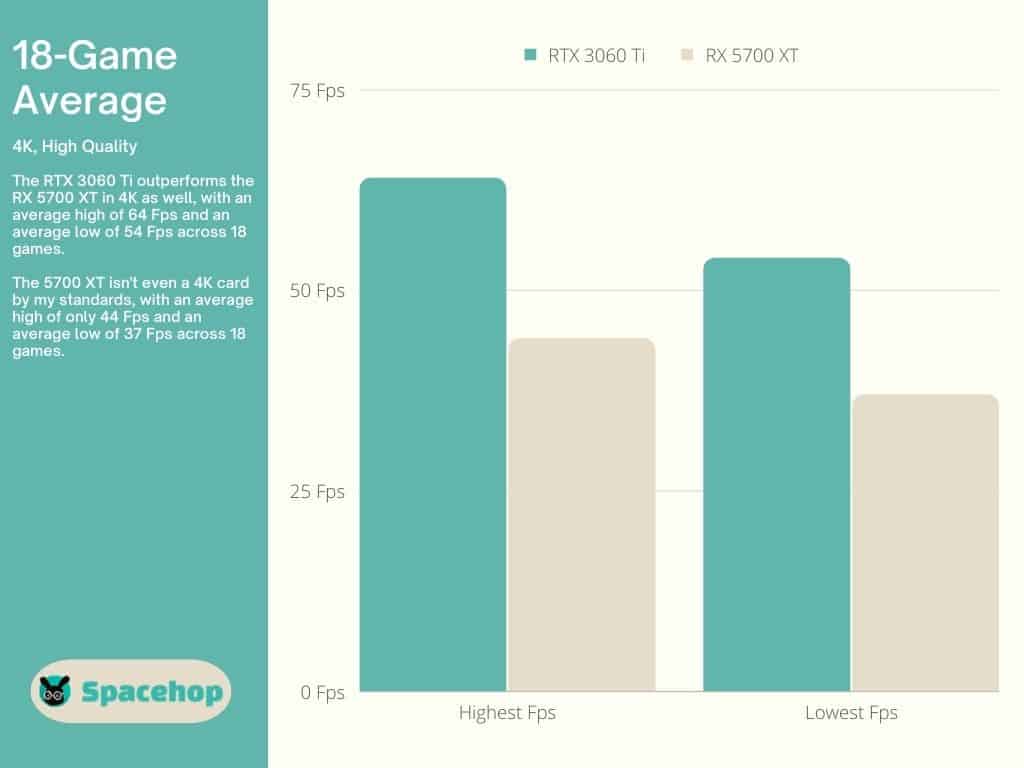
At 4K, the 5700 XT disappoints, with the highest average Fps reaching only 44 (high) and dropping to 37 Fps (low). The 3060 Ti handles 4K a bit better, with the highest average hitting 64 Fps and a low of 54 Fps.
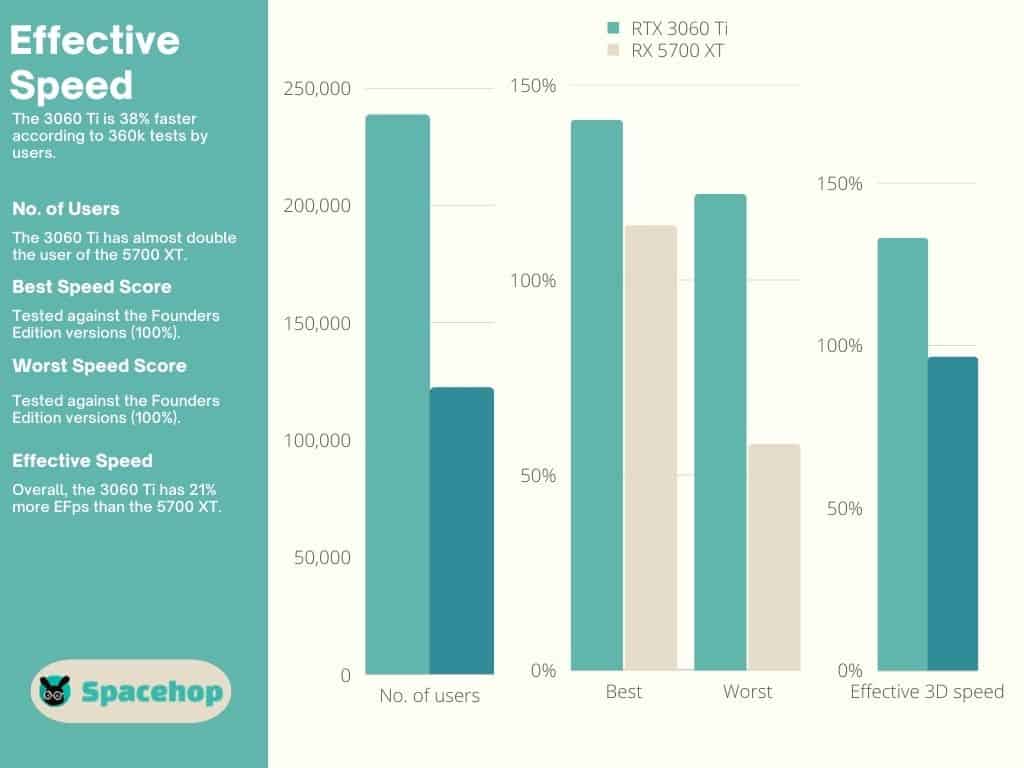
Winner: RTX 3060 Ti
Connectivity
The 3060 Ti Founders Edition (FE) uses a 12-pin PSU connector. Third-party variants are equipped with both 6 and 8-pin connectors depending on the variant you choose. The 5700 XT FE uses a combination of a 6-pin plus 8-pin connector, as do all of the third-party variants.
You can hook up four screens to both cards — three via DisplayPort and one via HDMI. The 3060 Ti uses an HDMI 2.0 port capable of resolutions up to 4K. The 5700 XT uses an HDMI 2.1 port which can support resolutions up to 10K. Considering its capabilities, I’m not sure how well it would do — but the potential is there.
Winner: Draw
TDP
TDP can mean several things, but only two are important for this comparison. One is Thermal Design Power — the maximum amount of power a subsystem can draw from the PSU. Another is Thermal Design Point — how much heat a subsystem can create (safely). While power consumption depends on product design, loads, and clock speeds, heat depends on those same factors and more.
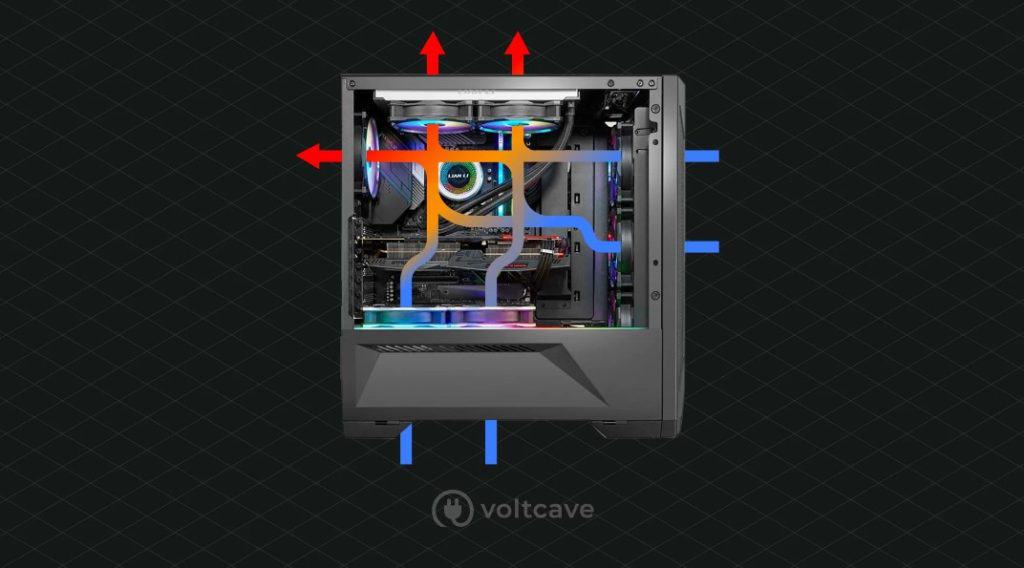
Heat levels differ according to your PC case and ventilation, airflow, GPU thermal plates, fan speed, dust build-up, and more. An out-of-the-box 5700 XT FE has a maximum temperature of 84°C (183.2°F), and many users complain that it overheats too quickly (~80°C) under load, throttling performance. The 3060 Ti has a maximum temperature of 77°C (170.6°F) though it tends to work at 69°C under load.
Both cards need a bit above a run-of-the-mill 450-500 W PSU, with the RTX 3060 Ti FE drawing 200 W and requiring at least 600 W PSU (as claimed by Nvidia). Most third-party variants come factory overclocked and probably require more Watts, so pay attention when choosing a specific card so that your PSU’s output matches the card’s TDP.
The RX 5700 XT uses slightly more power at 225 W, but AMD claims it only requires a 550 W PSU. The same goes for 5700 XT third-party variants and their PSU requirements.
Winner: RTX 3060 Ti
Design and Build
Both Founders Edition cards are dual-slot cards. Every third-party variant of the 5700 XT is also a dual-slot card. This isn’t the case with the 3060 Ti — several variants are triple-slot cards over 300 mm in length. This is due to larger cooling systems with three fans. Less heat; better performance. Ensure you have enough space in your case for such a large card before you purchase one.
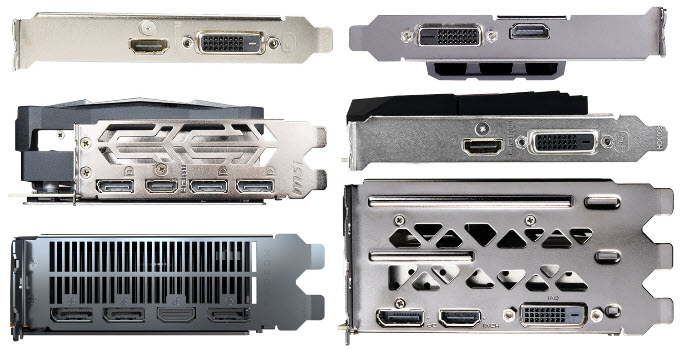
Some of you might find that a mini variant is a good choice or that a regular dual-slot card is good enough. Personally, I don’t. I’m always for a better cooling solution, and if there is one out there for a card I’m after, triple-slot variants with better cooling are always at the top of my list.
Winner: Draw
Related: Best CPUs for RTX 3060 Ti and Best CPUs for RX 5700 XT
3060Ti vs 5700XT – Standout Features
Tensor cores
Nvidia’s third-generation Tensor Cores come into play when DLSS is turned on during gaming. Otherwise, they are dedicated to deep learning and AI development.
Ray tracing cores
Though there aren’t many titles that use this technology, more will appear in the years to come, and having the potential to handle them is a win for me.
Pricing & Availability
As many predicted, GPU prices have continued to drop recently, at least when looking at the 3060 Ti. And if you were holding out for the next series from either company, hoping that Moore’s Law would land you a good deal. Well, tough luck. We just got an RTX 40 reveal the other day with Nvidia CEO Jensen Huang, who said, “Moore’s law is dead…”.
So, unless you’re keen on paying full price upon the RTX 40’s release, you can get an RTX 30 card pretty cheap these days. When I last looked at the 3060 Ti on Amazon (a month ago), I couldn’t find a single variant under $600 at the time of publication of this article. Now you can grab this ZOTAC Gaming variant over a third below that. That’s even below the $399 MSRP (at the time of writing this article), which hasn’t been seen since its release.
The Founders Edition is available but still priced over the MSRP. You can grab this overclocked MSI Gaming variant for about the same price or opt for a more expensive triple-slot ASUS ROG card with a 1,890 MHz boost clock speed.
The 5700 XT is a completely different beast, and the prices are monstrous. It was released with the same MSRP as the 3060 Ti, $399, and has since risen to crazy numbers. For example, this GIGABYTE Gaming version is the only one priced near the MSRP, though still above it. It only goes up from there.
The craziest offer of all is the MSI Gaming variant, priced 100% over MSRP. This Sapphire Nitro+ is priced 50% over the MSRP, while this Sapphire Nitro+ variant is a “great deal” at only 25% over the MSRP. I don’t know about you, but this is only more reason to forget about the 5700 XT and grab a 3060 Ti!
Conclusion
All things considered, in this 3060 Ti vs 5700 XT comparison, the 5700 XT is a complete waste of money, especially due to its current unbelievable prices. That and it can’t match the 3060 Ti in almost any segment, let alone surpass it.